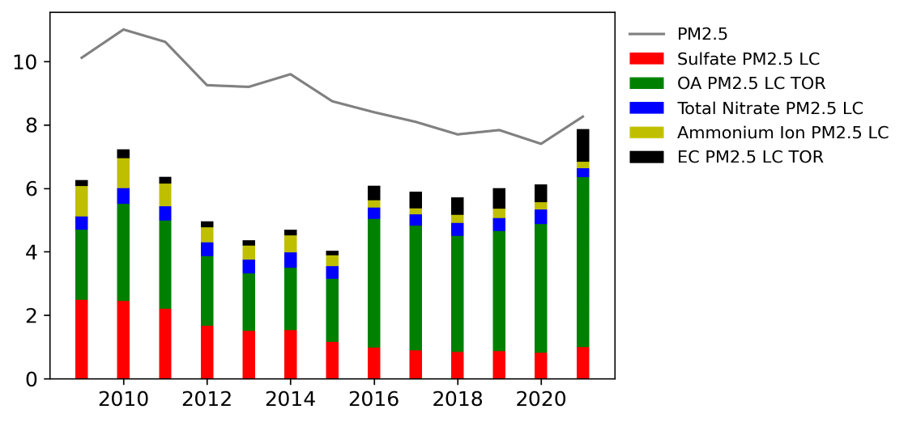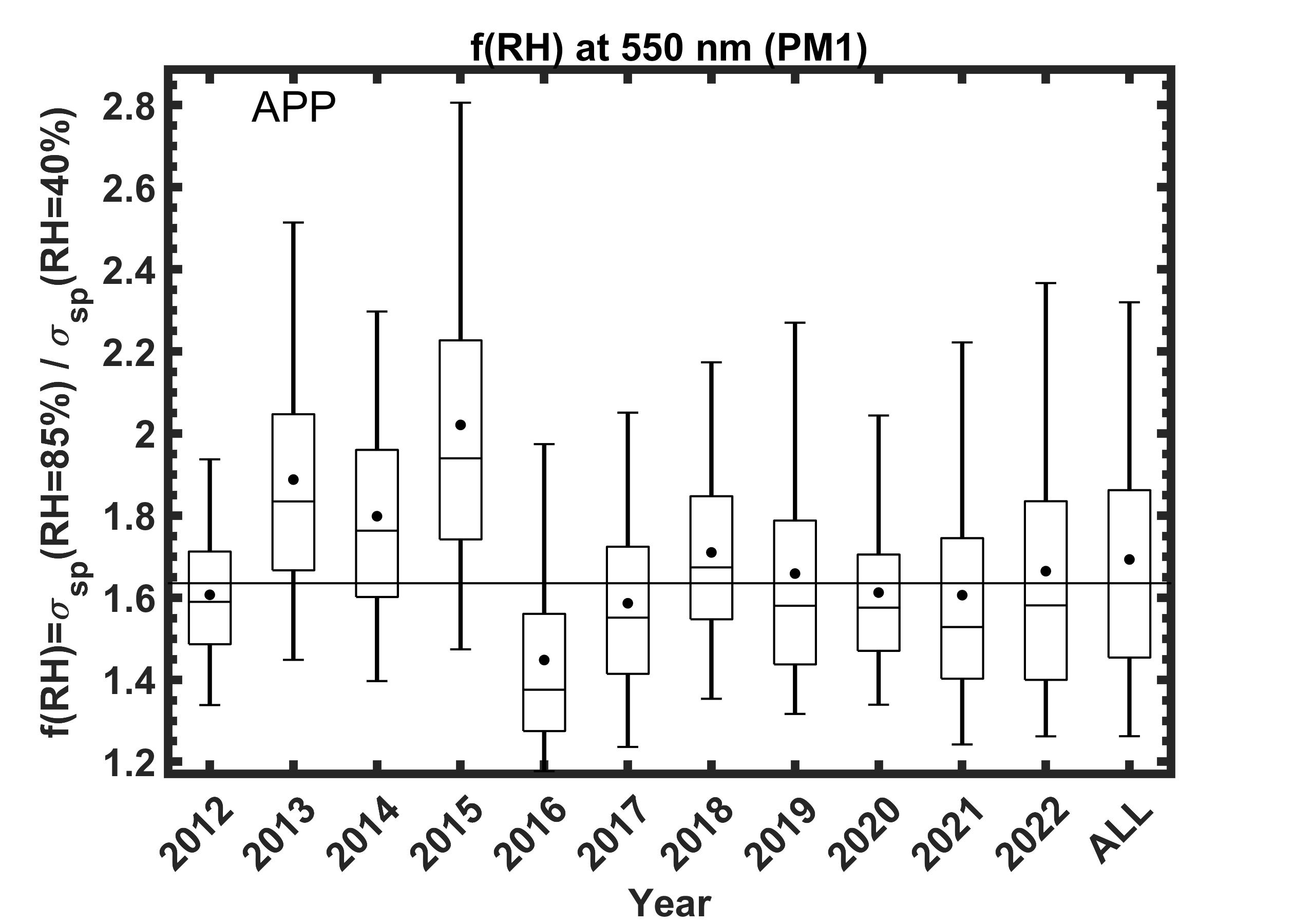Decreasing Aerosol Hygroscopicity at the NOAA FAN Site at Appalachian State University and the Potential Role of Changing Aerosol Composition
J.P. Sherman, P. Liu and L. Yin
Appalachian State University, Department of Physics and Astronomy, Boone, NC 28608; 724-664-9077, E-mail: shermanjp@appstate.edu
The Southeastern U.S., home to high levels of biogenic secondary organic aerosol and sulfate aerosol loading during summer, is one of only a few regions that did not warm in the 20th century. Aerosol optical depth, lower tropospheric scattering and absorption coefficients have all demonstrated statistically-significantly decreasing trends in the past decade (Collaud-Coen, et al., 2020), likely in response to the large decreases in SO2 and NOx emissions in the Eastern U.S. Since sulfate is decreasing faster than organics in the SE U.S. (Hand et al (2014) and Fig.1), aerosol hygroscopicity and its seasonality may also be changing. The NOAA FAN site at Appalachian State University (APP) possesses the longest active, continuous dataset of aerosol light scattering enhancement factor f(RH) in the continental U.S. (2012-present) so studies of changes in aerosol hygroscopicity are now possible. Aerosol chemistry at APP is representative of the background SE U.S. (Link et al., 2015).
This presentation outlines how aerosol hygroscopicity is changing over the past decade at APP, in the context of changing aerosol composition at six regional EPA monitoring sites. The scattering hygroscopic enhancement factor f(RH) experienced a steep decline in 2016 (Fig.2), coincident with increasing organic aerosol concentrations and continued decrease in sulfate in the region (Fig.1). Since 2016, f(RH) has exhibited only small changes, while sulfate mass concentrations have remained relatively constant. Strong positive (negative) correlations were observed between the gamma fit parameter to f(RH) measured at APP and the sulfate and sulfate (organic) mass fractions measured by a collocated quadrupole aerosol mass spectrometer during summers 2012-2013 and the winter in between (Fig.1). This, along with the decreasing sulfate mass concentrations and mass fractions (Fig. 1) suggest that the changing aerosol composition is likely playing a role in the changing aerosol hygroscopicity. Less hygroscopic aerosols will have effects on not only aerosol light scattering but also their ability to serve as cloud condensation nuclei (CCN).
References
Hand, J. L., et al (2014) Atmos. Environ., 94, 671–679
Link, M.F.et al (2015) J. Atmos. Chem. 2015, 72, 81-104
Figure 1. Figure 1. Annual mean speciated PM2.5 mass concentrations from six EPA sites near APP.
Figure 2. Figure 2. Box plots of aerosol hygroscopic scattering enhancement f(RH) at APP over full years. The ‘ALL’ box provides the statistics for all days the 2013-2022 period. The mean is denoted by the dot while the horizontal bar represents the median.


